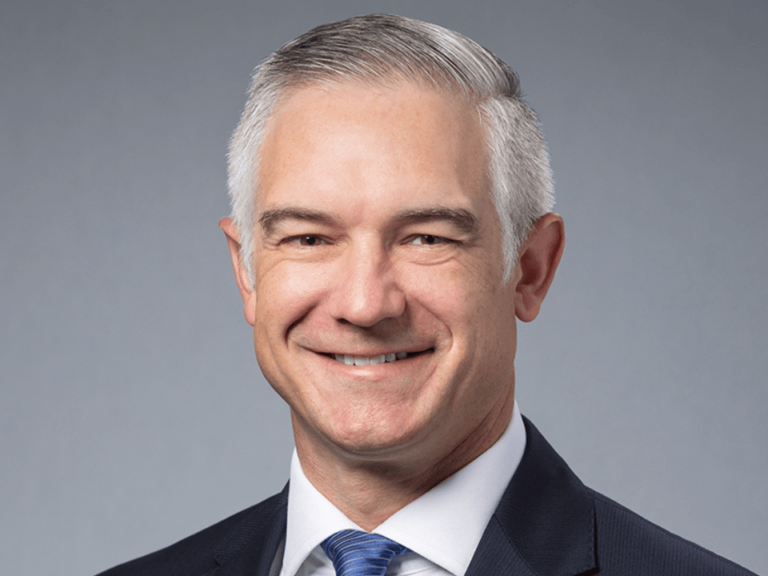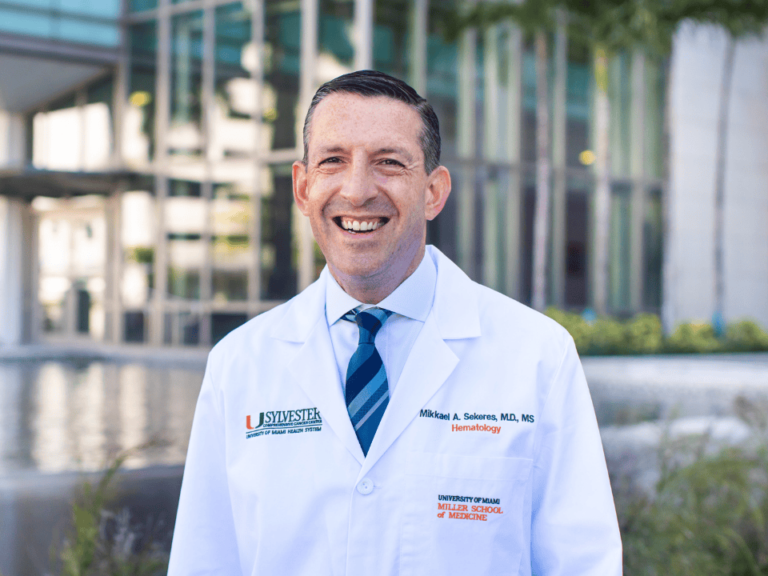The power morcellator should no longer be used for hysterectomies or fibroid removal in the vast majority of women getting these procedures, FDA declared in a highly anticipated guidance document Nov. 24.
Using a new authority that bypasses public comment, the agency stopped short of imposing an outright ban on the device, but severely restricted its use in the following manner:
- The agency placed a “black box” label on the device, warning that the use of power morcellators during fibroid surgery may spread cancer and decrease the long-term survival of patients. The boxed warning is FDA’s sternest warning for significant risk of serious or life-threatening adverse effects.
- The agency’s guidance decreed that power morcellators are contraindicated for removal of uterine tissue in menopausal and post-menopausal women, and in women who are eligible for surgeries that remove uterine tissue intact i.e. through the vagina or mini-laparotor.
- Similarly, power morcellators are now contraindicated in gynecologic surgery in which the tissue to be morcellated is known or suspected to be cancerous.
Categorized as a Class II moderate-risk surgical device by FDA, the power morcellator is used to cut tissue into small fragments for removal through small incisions. When used in patients with undetected or missed uterine cancers, the device spreads malignant tissue in the patient’s abdominal cavity, rapidly upstaging the disease (The Cancer Letter, July 4).
FDA’s move is expected to adversely impact minimally invasive surgical gynecologists, who made power morcellation a routine procedure, which is performed in a subset of an estimated 50,000 to 100,000 women who undergo laparoscopic procedures for hysterectomy each year in the United States.
Class II devices are cleared through the 510(k) process, which applies to new devices that are based on comparability to predicate devices already in use. Only Class III high-risk devices require an FDA premarket approval application.
Here, semantics mean a lot: the standards for Class II clearance aren’t as rigorous as for Class III approval.
This week’s FDA guidance does not reclassify the power morcellators. It is unclear whether FDA intends to re-categorize power morcellators or require manufacturers to resubmit the devices for approval as Class III devices.
In its decision, the agency cited its earlier estimate that one in 350 women who are undergoing hysterectomy or myomectomy for fibroids is found to have an unsuspected uterine sarcoma. The American Association of Gynecologic Laparoscopists disagrees with the estimate, citing international data reporting lower prevalence rates.
“The FDA decision today is based on what we believe is best for patients,” William Maisel, deputy director for science and chief scientist at the FDA’s Center for Devices and Radiological Health, said at a press call Nov. 24. “The contraindications cover the vast majority of women who would undergo morcellation during myomectomy or hysterectomy, which should reduce the use of the device in patients at greatest risk.”
The contraindications are so broad that they make morcellation appropriate only for young women who may choose, after a consent process, to undergo the minimally invasive procedure to preserve their ability to bear children.
The agency’s decision comes nearly a year after former Harvard physicians Amy Reed and Hooman Noorchashm launched a vigorous campaign that drew FDA’s attention to the issue (The Cancer Letter, July 4).
“I think it’s a good first step, or second step after the April advisory,” said Rick Kaitz, a Boston attorney whose wife, Erica, died after her leiomyosarcoma was upstaged by power morcellation performed at Brigham & Women’s Hospital, a Harvard-affiliated institution (The Cancer Letter, Nov. 21).
“In most circumstances, I can’t imagine that this industry is going to continue to survive at the moment. I think FDA’s decision is strong enough to significantly impact the nature of the practice,” Kaitz said.
“Drs. Reed and Noorchashm should be really saluted for the amount of progress they’ve made within a relatively short period of time. I know for all of us it seems like forever, but I’m very encouraged.”
Immediately in Effect
This is the first time FDA has used an authority, called the “Immediately In Effect” guidance.
According to Maisel, the IIE was created by CDRH to act swiftly on issues that the agency would normally respond to with a routine guidance.
“We didn’t feel that issuing this guidance in draft form, and waiting for a comment period, and then finalizing it, is in the best interests of the public health,” Maisel said at the press call.
Bill Vodra, a former FDA associate chief counsel for drugs, said the agency’s rapid response is extraordinary.
“The timeframe of this is pretty astoundingly fast, for me at least,” Vodra said to The Cancer Letter. “If you get people who understand the system i.e. doctors who become patients, they can push much more aggressively than the ordinary consumer can. What I’m most impressed by here is how quickly they’ve done this.”
Vodra helped draft many agency regulations still in use, including those implementing the Controlled Substances Act and FDA’s rules for Good Manufacturing Practices, Good Laboratory Practices, Good Clinical Practices, bioequivalency and the Orange Book.
“Compare how long it took FDA to address this issue, with, let’s say, the surgical mesh that was being used a couple of years ago—that took years for FDA to finally get around to do something about it,” Vodra said.
The American College of Obstetricians and Gynecologists, a 58,000-member professional society, said it would seek additional clarification of the agency’s guidance.
“We are pleased that the FDA’s action takes steps to enhance patient safety while allowing the appropriate use of power morcellation in gynecologic surgery for select women,” Hal Lawrence, executive vice president and CEO of ACOG, said in a statement. “The FDA’s clarification of contraindications for morcellation will help to ensure that only women at low risk for an occult malignancy will undergo laparoscopic hysterectomy or myomectomy with morcellation.
“However, we look forward to working with the FDA to provide additional clarification regarding certain language within the contraindications that could be confusing to patients and physicians.”
AAGL, another professional society, characterized FDA’s action as a setback.
“Abandoning power morcellation technology for many patients undergoing minimally invasive myomectomy, supracervical hysterectomy, or hysterectomy for a large uterus will be a setback in the care of patients with gynecologic conditions,” Franklin Loffer, AAGL medical director, said in a statement.
Observers: FDA “Severely Restricts” Device Use
FDA-watchers said the agency’s decision would likely eliminate power morcellation as a routine surgical procedure in gynecology.
“FDA’s statement is going to discourage a significant amount of use, assuming that most of these procedures are being done in post-menopausal and menopausal women. That’s a pretty clear statement. They want this to drop substantially,” said Vodra, a retired partner of Washington, D.C., law firm Arnold and Porter. “If 80 percent of the women who undergo power morcellation are peri- or post-menopausal, then 80 percent of these procedures shouldn’t be done anymore.”
“The contraindication means no rational person would use the product this way. So that’s really saying, ‘No doctor out there should use this. If a doctor goes ahead and uses it, it’s not malpractice per se, but, in many or some jurisdictions, it shifts the burden of proof from the patient to the doctor.’”
Normally, in a medical malpractice case, the patient has to show that the doctor did not follow the standards prevailing in his or her community at the time that a procedure was done or a drug was used.
“Now, any physician that continues using power morcellators, and any device company which still wishes to sell and promote these devices will be taking a huge risk in the liability arena, both medical and otherwise,” said David Challoner, emeritus vice president for health affairs at the University of Florida. “It’s de facto, not de jure.”
Challoner chaired the Institute of Medicine committee tasked by FDA and Congress in 2009 to review the 510(k) process that clears Class II devices such as the power morcellator based on predicate devices.
“I see FDA’s action as severely restricting the use of morcellation in the treatment of uterine fibroids,” Challoner said. “That’s a very desirable outcome, and it’s only slightly second-best to just banning the instruments from the market completely.”
More insurance companies may refuse to pay for power morcellation as a result of FDA’s guidance. Several companies have ended payments for the procedure prior to the guidance (The Cancer Letter, Nov. 21).
“It would be up to the insurance company and the laws governing insurance,” Vodra said. “Clearly, they could refuse to pay for any procedure that is contraindicated. But normally, a boxed warning would not be disqualifying from reimbursement.”
FDA said it would continue to consider other steps that may further reduce the risk of spreading unsuspected cancer, including preoperative cancer detection methods, or containment devices, such as bags, that can prevent dissemination of malignant tissue.
The Brigham & Women’s Hospital has halted a controversial study that combined power morcellators with “containment bags” intended to capture tissue during gynecological surgery.
Key Advocates Call for Ban
Reed and Noorchashm, the couple who led the campaign against morcellation, called FDA’s decision a “failure.”
“This is a massive and monumental failure in federal regulation,” Noorchashm said to The Cancer Letter. “From a scientific, clinical, surgical and common sense perspective, it’s very clear that you don’t mince up tissues that have any degree of malignant potential inside a patient’s body.
“The FDA was confronted with this problem. They chose to not definitively regulate this problem, and that is clear demonstration of regulatory incapacity. They were given a binary decision to make and they failed. This should tell anyone with a remote understanding of the issue that the FDA is a captured agency—beholden to industry interests over patient safety.”
Reed said banning the device is the only appropriate action.
“People say we should be thankful that we’ve gotten as far as we have, that it moved as it did and we raised the level of awareness,” Reed said. “But I have to say, overall, I’m overwhelmingly disappointed with the whole decision. There is no question in my mind that they should have outright banned it, and I’m not sure what they thought they were overreaching if they did.”
FDA’s Maisel said that banning power morcellators would require doctors and patients to choose other options—typically more invasive surgery.
“Banning laparoscopic power morcellators would completely remove them from the market for all patients in all indications,” Maisel said. “We recognize that there are risks associated with all fibroid treatment options, and we believe there is a very small population in whom the benefits for this procedure.
“When the patients are appropriately informed of the potential risks, and that the potential benefits may outweigh the risks, the individual women may choose to have their procedure done, knowing the potential benefits and risks.”
Maisel said the key to preserving fertility in some women is to minimize the damage to the uterus.
“We recognize that some younger women who are interested in maintaining their ability to have children or wish to keep their uterus intact after being informed of the risk, may be candidates for this procedure,” Maisel said at the press call. “Younger women present a lower risk of having underlying cancer than older women.
“Doctors and patients should determine if the patient is in an appropriate patient, together, and the agency believes that women should have this option available to them should they wish to preserve their fertility and they are informed of the risk.
“Being able to remove the fibroid and reduce the risk of adhesions that might be associated with a traumatic surgery can help preserve fertility,” Maisel said. “Some clinicians specialize in this area, and believe that it is an important tool that needs to remain available.”
Reed and Noorchashm disagree.
Reed said no data exist to show that fertility is adversely affected in laparotomies vs. laparoscopic removal of fibroids with power morcellation.
“Firstly, I would like to see the data that mini-laparotomy versus full laparoscopy for fibroids has a detrimental impact on fertility,” said Reed, formerly an anesthesiologist at Beth Israel Deaconess Medical Center. “That’s what they are saying, that adhesions by mini-laparotomy would negatively impact the fertility of women, so they should be allowed to opt for it. I know of no data that supports that claim.”
“For such a data heavy driven argument I want to know who said that this was a problem and based on what? Because the adhesions caused by spraying a huge fibroid around likely are as significant as a laparoscopic dissection and mini-laparotomy.”
“And I think that is the important point: it’s power morcellation vs. laparoscopic dissection and mini-laparotomy, not full laparotomy.”
Reed underwent power morcellation at Brigham & Women’s Hospital in October 2013. The procedure upstaged her previously undiagnosed leiomyosarcoma, which was then aggressively treated. The disease is now in remission.
“Because of the wording of the FDA, women will still be on that table having power morcellators used at the discretion of the physician,” Reed said to The Cancer Letter. “Secondly, I would like the FDA to clarify what its intentions are in regards to studying containment devices. Knowing the potential for harm is great, is this something they intend to support human experimentation on? They clearly state that this is an area that they will watch closely. Will this be done in animals, or will they permit this to be done in humans? Surely one would think not.
“I think the FDA has some serious explaining to do.”
Noorchashm said that alternative uterus-sparing surgeries are available.
“You don’t need to use a morcellator to do a myomectomy, which is what is meant by a ‘uterine sparing’ operation. Morcellators are only used to extract the tissue from small incisions,” said Noorchashm, a cardiothoracic surgeon who formerly practiced at Brigham and who is now at Thomas Jefferson University. “To perform a uterine sparing operation, these surgeons can dissect out the problematic myomas they’ve ascertained are not malignant using intra-op or pre-op biopsies. Then, they take out the bagged myomas through a small incision. It’s really that simple. There is absolutely no need to use a morcellator.”
“You can, perfectly well, either by using laparoscopic or robotic devices, do a myomectomy and remove the myoma from the body without power morcellation through a small incision at the end of the operation. I think the concept that a uterine sparing myomectomy requires a morcellator is a smokescreen created by device advocates and gynecologists—it’s hogwash.”
Several members at an FDA advisory committee hearing in July expressed a desire to avoid any kind of morcellation of tissues (The Cancer Letter, July 25).
“Myomectomy, in and of itself, isn’t an oncologically safe procedure. There is a conundrum there,” Reed said. “But you don’t have to make it worse by spreading everything all over the abdominal cavity with power morcellation.”
Vodra: 510(k) Does Not Necessarily Protect Consumers
Pre-menopausal young women who elect to undergo power morcellation could be waiving the ability to claim medical malpractice against their physicians, if they are harmed by the surgery.
“If a woman is pre-menopausal and elects to undergo power morcellation, then if she has been warned by the doctor that these are the risks and benefits, and she then chooses the procedure, she probably has no claim whatsoever against the doctor,” Vodra said. “When a doctor uses the normal standard of care, in which you’d advise a patient before a surgery on what the risks are, the patient can opt to have it or not have it.”
However, doctors can be vulnerable in these situations if they fail to exercise due diligence.
“I could see situations in which, for example, the doctor did not do any medical history to determine whether the patient was at risk of uterine cancer, and did nothing to check or test whether this patient could have a cancer,” Vodra said.
“If there is a blood test available at some point and he didn’t run the blood test before he did the procedure, that could lead to malpractice.
“The doctor cannot say, ‘What do you want me to do?’ The patient’s not an expert, the doc is, and has an obligation to exercise due diligence according tothe standard of care in the community before surgery is done.”
Young women should not be subject to the risks of power morcellation when there are alternatives, Reed said.
“I had some degree of health literacy, but what do you do with somebody with a third grade education? What do you with somebody with prejudices against the medical establishment, and there are issues with fertility and management?” Reed said. “There are entire subsets of population who look at all this very differently than Hooman and I do.
“There are a lot of women who’d say, ‘I don’t want you to be taking my fertility away,’ even if they have no intention of having children. That’s a touchy subject, but again, you can do without morcellation.
“FDA is very quick to trash drugs that do not meet safety and efficacy criteria, but on the other hand, here’s a dangerous device, and it’s not banned. What’s the hold up?”
Vodra said the premarket requirements for drugs, and for Class II devices such as the power morcellator are very different.
“In the drug arena, drugs have to be shown to be safe and effective for a specific use in order to get them into the marketplace,” Vodra said. “In the device arena, you don’t have to.
“The 510(k) process means you simply have to show that you’re substantially equivalent to another device that’s in the marketplace. You don’t have to show that you’re effective at doing anything, and in a lot of products—like the scalpel—you don’t need to.
“If I read the history of the power morcellator right, it was cleared for one purpose, and doctors started using it for a different purpose, so that’s where the problem arose.
“That’s where drugs and devices differ. Almost all drugs have to be shown to be effective for a specific use before they can get to the market for any use, whereas devices don’t have to do that.
“That’s what the 2011 IOM report on the 510(k) is about. The 510(k) is not protecting the consumer in the way people think it is.
“People thought that the devices that were cleared are safe, but they are not approved. FDA approves products that are safe and effective, but it clears devices that can prove to be equivalent to something else.”













